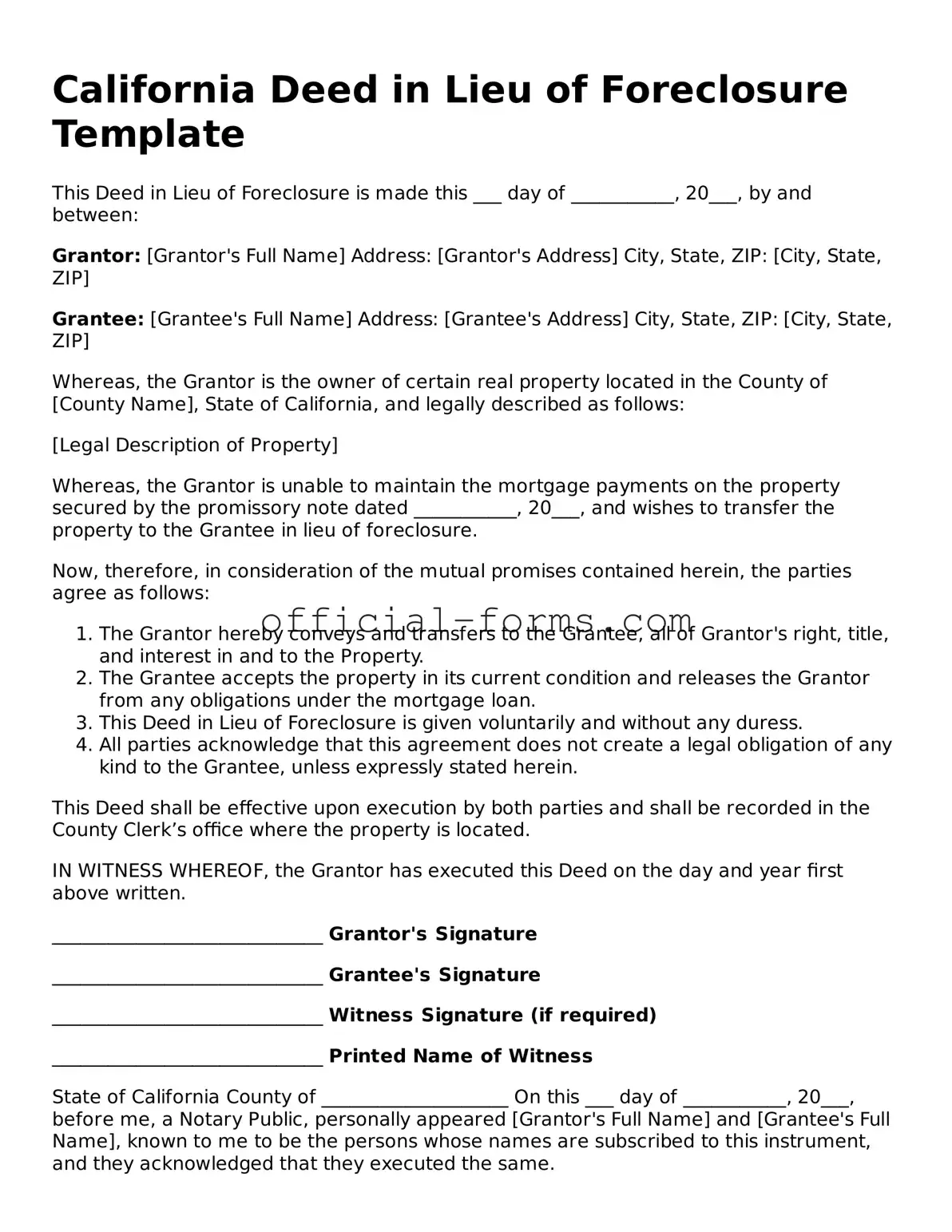Filling out a California Deed in Lieu of Foreclosure form can be a complex process. Mistakes can lead to delays or even the rejection of the deed. Here are eight common errors that individuals often make when completing this important document.
One frequent mistake is not providing accurate property information. It’s essential to include the correct legal description of the property. Omitting details or using incorrect information can cause issues later on. Ensuring that the property address and legal description match what is on public records is crucial.
Another common error is failing to sign the document. While it may seem simple, forgetting to sign can invalidate the deed. All parties involved must provide their signatures in the appropriate sections. Double-checking for signatures before submission is a good practice.
Many individuals also overlook the need for notarization. A Deed in Lieu of Foreclosure must be notarized to be legally binding. Skipping this step can lead to complications, as the document may not be recognized by the lender or in court.
People often make the mistake of not understanding the implications of the deed. A Deed in Lieu of Foreclosure transfers ownership of the property back to the lender, which can have significant legal and financial consequences. Consulting with a legal expert before signing can help clarify these implications.
Another area of concern is not notifying all parties involved. It’s important to inform all relevant parties, including co-owners or spouses, about the deed. Failing to do so can lead to disputes and complicate the process further.
Some individuals neglect to review their mortgage terms before proceeding. Understanding the specific terms of the mortgage can help in determining if a deed in lieu is the best option. It’s wise to review the mortgage agreement and consult with a financial advisor if needed.
Additionally, incomplete or vague information on the form can cause issues. Providing detailed and clear information helps ensure that the deed is processed smoothly. Avoid leaving any sections blank or filled with ambiguous terms.
Lastly, many people forget to keep copies of the completed form. After submitting the deed, retaining copies for personal records is essential. This can serve as proof of the transaction and provide peace of mind in case any questions arise later.
